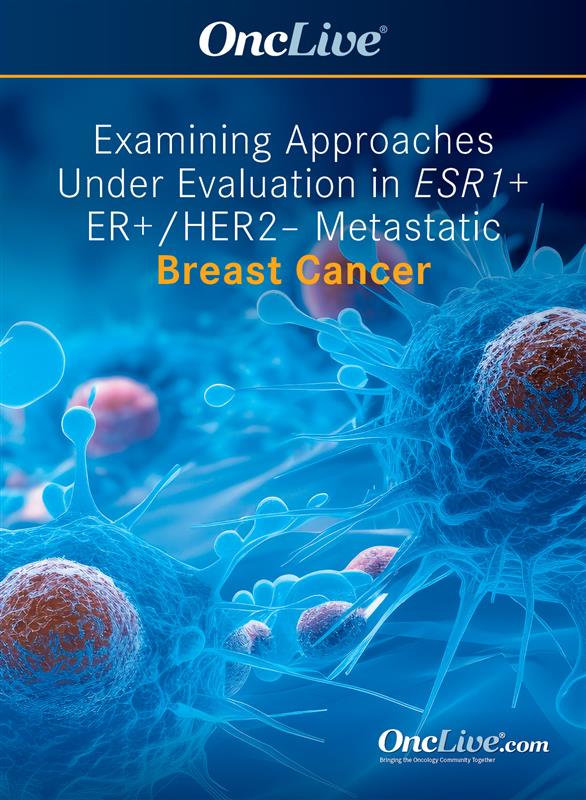Commentary
Video
Supplements and Featured Publications
Dr Jhaveri on the Rationale for the ELAINE-3 Trial in ESR1-Mutant ER+/HER2– Breast Cancer
Author(s):
Komal Jhaveri, MD, FACP, discusses the rationale for investigating lasofoxifene alongside abemaciclib in ESR1-mutated estrogen receptor–positive, HER2-negative metastatic breast cancer.
Komal Jhaveri, MD, FACP, section head, Endocrine Therapy Research Program, clinical director, Early Drug Development Service, Patricia and James Cayne Chair for Junior Faculty, Memorial Sloan Kettering Cancer Center, discusses the rationale for investigating lasofoxifene plus abemaciclib (Verzenio) in patients with ESR1-mutated estrogen receptor (ER)–positive, HER2-negative metastatic breast cancer.
Traditionally, tamoxifen has been the primary selective estrogen receptor modulator (SERM) used in both early-and late-stage breast cancer, Jhaveri begins. However, the novel SERM lasofoxifene has had encouraging preclinical activity in ESR1-mutant tumors, bolstering interest in the use of this agent in breast cancer, Jhaveri says.
Lasofoxifene was previously investigated in the phase 2 ELAINE-1 (NCT03781063) and ELAINE-2 (NCT04432454) trials in patients with ER-positive, HER2-negative breast cancer who experienced progression on prior endocrine therapy and CDK4/6 inhibition, Jhaveri states. ELAINE-1 directly compared lasofoxifene with fulvestrant (Faslodex) in patients with ESR1 mutations who had previously received a CDK4/6 inhibitor for at least 12 months, Jhaveri details. Although the trial did not show a statistically significant improvement in median progression-free survival (PFS) with lasofoxifene vs fulvestrant, there was a notable numerical PFS improvement of 5.6 months (95% CI, 11.3-32.1 weeks) with lasofoxifene vs 3.7 months (95% CI, 11.7-24.1 weeks; log-rank P = .138) with fulvestrant, (HR, 0.699; 95% CI, 0.434-1.125; P = .140) she reports.
Another interesting signal emerged from ELAINE-2, which evaluated the combination of lasofoxifene plus abemaciclib, Jhaveri continues. Despite the trial’s small sample size, the combination demonstrated clinically meaningful activity, particularly in the ESR1-mutant patient population, she notes.
To validate these efficacy signals, investigators designed the larger, randomized registrational phase 3 ELAINE-3 trial (NCT05696626) in this population, Jhaveri explains. In ELAINE-3, the investigational combination of lasofoxifene plus abemaciclib is being compared with standard-of-care fulvestrant plus abemaciclib in patients with disease that has progressed on a prior CDK4/6 inhibitor.
ELAINE-3 is significant because it involves the use of the novel SERM lasofoxifene in the context of ESR1-mutant breast cancer, Jhaveri emphasizes. The results of ELAINE-3 are highly anticipated, as they may provide valuable insights into the efficacy of this novel combination in a specific patient population, she concludes.
Editor's Note: Clinicians referring a patient to MSK can do so by visiting msk.org/refer, emailing referapatient@mskcc.org, or by calling 833-315-2722.








%20u.jpg?fit=crop&auto=format)

